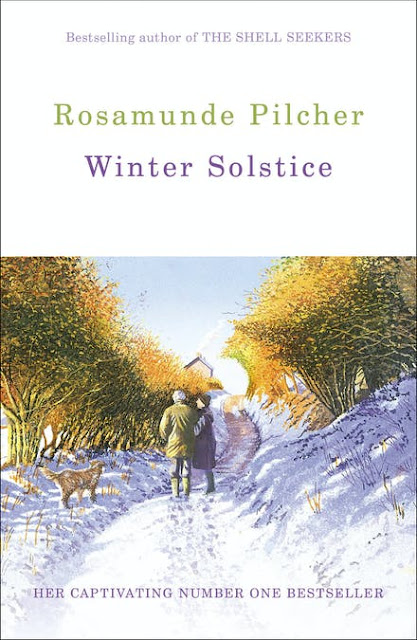20 Books of Summer: The Shape of Water by Andrea Camilleri
This is the first of the immensely popular books by Andrea Camilleri. Set in Sicily, they follow the life and work of Inspector Salvo Montalbano, a man who - like so many fictional detectives - doesn't always follow the rules.
Two garbage collectors are assigned to clear up 'the Pasture', an area of rough brushland on the outskirts of the fictional town of Vigata. Since the arrival of army detachments from the north - sent to 'assist' the local police and the carabinieri - the Pasture has become;
a specialised market of fresh meat and many and sundry drugs
controlled by one of Montalbano's informants, Gege Gullota (Gege's paying a cut to the Chief of Vice, who therefore has no incentive to close the Pasture down), and providing for the needs of soldiers far from home in a strange new world of people;
who spoke an incomprehensible dialect consisting not so much of words as of silences, indecipherable movements of the eyebrows, imperceptible puckerings of the facial wrinkles.So Pino Catalane and Saro Montaperto (both qualified surveyors, reduced to these unsavoury duties owing to lack of other opportunities) are not surprised to find the ground covered in used condoms. They are not, however, expecting to find Silvio Luparello - wealthy engineer, Provincial Secretary, notorious mover and shaker in Sicilian politics - dead in a car. And dead in a very compromising position.
Luparello has died of a heart attack. Montalbano's superiors want the case closed as soon as possible; they argue that no crime has been committed, the man died in embarrassing flagrante, his family should be spared any further pain. But Montalbano is suspicious - why would a man in the public limelight risk his reputation by visiting the Pasture? And when Montalbano finds out that Luparello had a much more sophisticated hideaway in which to conduct his clandestine affairs, he is even more convinced that the whole thing is a set up.
Given only a few days to investigate further, the Inspector digs into Luparello's family and business connections. He's particularly interested in why Luparello's right hand man Counsellor (lawyer) Rizzo seems so keen to recover a necklace that Saro Montaperto found on the Pasture just before Luparello's body was discovered. Saro had hoped to sell the necklace to fund urgent medical treatment for his sick baby, but Montalbano gets him to hand it over - he needs it to exert pressure on Rizzo.
Montalbano visits Luparello's family - his widow being one of the few likeable characters in the book. She was fully aware of her husband's affairs - with both women and men - but she too doubts he would have risked a trip to the Pasture, and firmly believes he died while being blackmailed for political purposes. At the family house he also meets Luparello's nephew, the beautiful and fragile Giorgio - what is his relevance, if any, to the crime?
And what about Luparello's deputy - and now his elected replacement - Cardamone, and Cardamone's dissolute playboy son Giacomino? Giacomino has an interesting Swedish wife. What was Ingrid Sojostrom's connection to Luparello?
The main problem I had with this book was that the settings, which are so enjoyed by so many readers, just did not come alive for me. I got the point that Sicilian politics are full of corruption (Camilleri has been quoted as saying;
'(social commentary) was always my aim. In many crime novels, the events seem completely detached from the economic, political and social context in which they occur. ... In my books, I deliberately decided to smuggle into a detective novel a critical commentary on my times. This also allowed me to show the progression and evolution in the character of Montalbano.' *
I understood that Montalbano has his own ways of working, and is therefore not popular with his superiors - but I simply couldn't imagine any of the scenes.
 |
| Inspector Montalbano is played by Luca Zingaretti |
I know that the TV series based on these books is tremendously popular - and people who love it always highlight the scenery and the food - but food isn't actually mentioned that much in this first book (Montalbano's housekeeper leaves him a dish of boiled shrimp, and another of roasted peppers, and the Commissioner's wife serves up a dish of baby octopus, but that's about it.)
I also found the plot contorted and difficult to follow, especially as Camilleri kept throwing in snippets of Montalbano's other cases - I would think 'what's this got to do with Luparello's death?' then realise the answer was nothing at all.
Camilleri has just about every woman in the book falling over herself to sleep with Montalbano. In fact much of the story comes across as pure male fantasy. And Montalbano seems to me to have some very questionable ideas of his own. He uses Ingrid to get the information he wants, then sends her back to a truly appalling home situation. There is a lot of casual misogyny in this book. Maybe that is what Sicily is like.
Perhaps the series improves. Perhaps I should watch the TV series first. But I don't think I'll be rushing to read more about Inspector Salvo Montalbano.
The Shape of Water by Andrea Camilleri is published by Picador.
*Mark Lawson - Andrea Camilleri: A Life in Writing, The Guardian, July 2012



Comments
Post a Comment